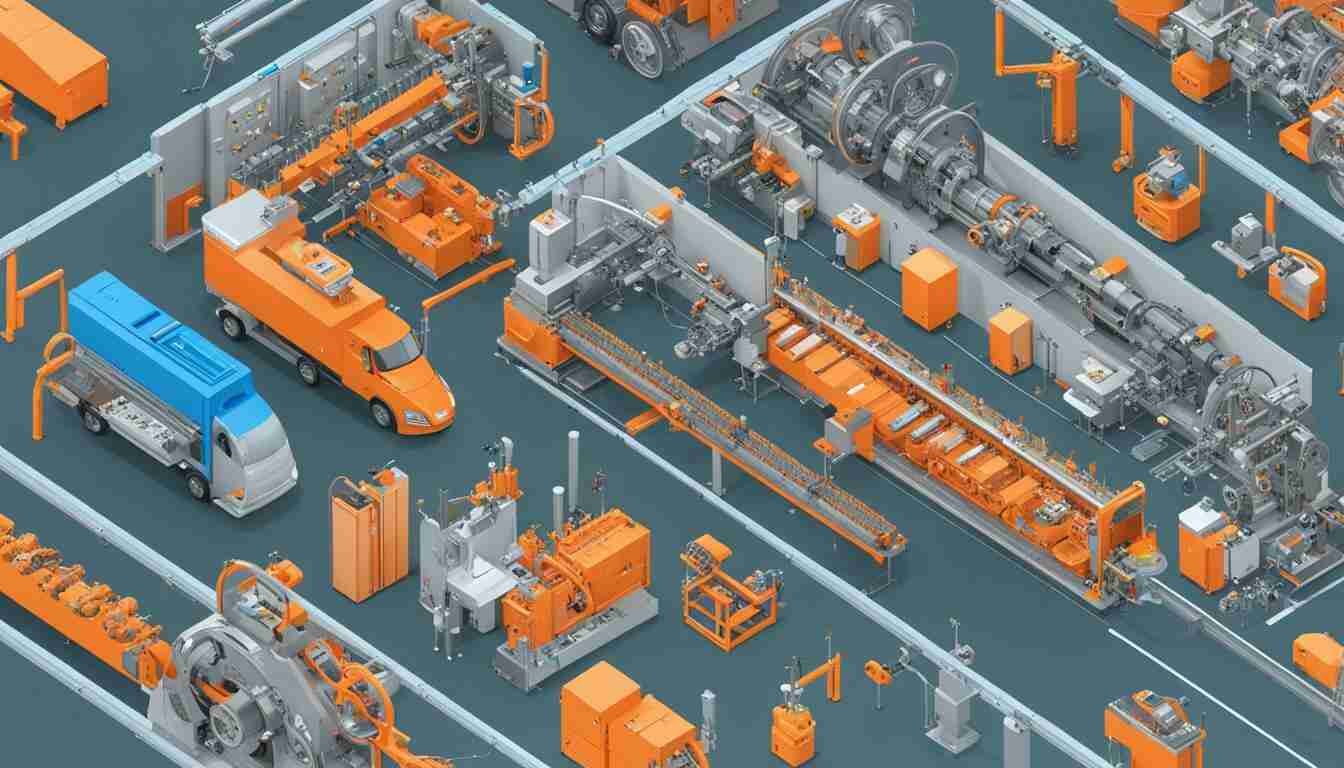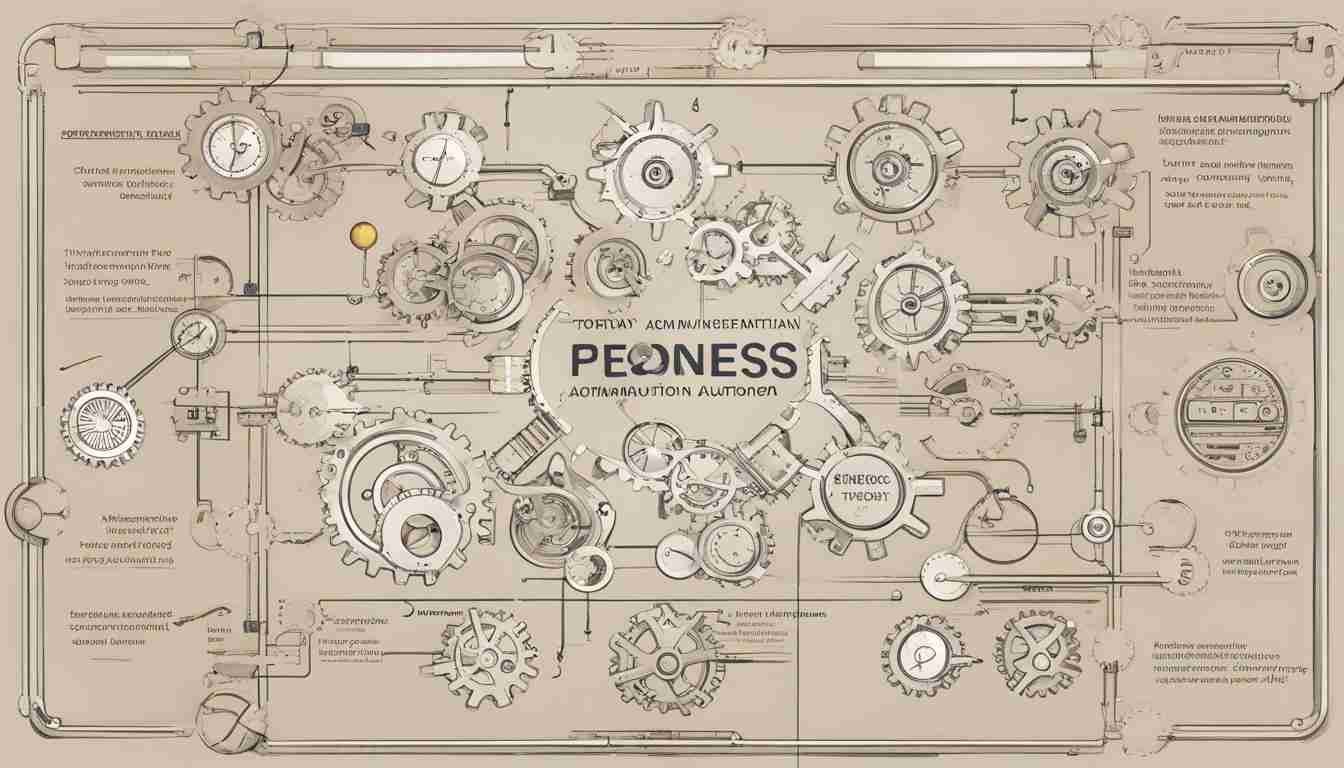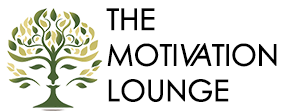Efficient workflow methods are crucial for achieving maximum productivity in the workplace. By utilizing effective work routines, individuals and teams can optimize their task management, streamline processes, and automate repetitive tasks to save valuable time.
In this article, we will explore the fundamental principles behind efficient workflow methods and provide practical tips and techniques for optimizing task management, automating processes, and fostering collaborative environments to achieve enhanced productivity.
Key Takeaways:
- Efficient workflow methods are essential for maximizing productivity in the workplace
- Effective work routines can optimize task management, streamline processes, and automate repetitive tasks
- Fostering a collaborative environment can enhance productivity and streamline work processes
Understanding the Basics of Efficient Workflow Methods
When it comes to optimizing your workflow, it’s important to understand the basics of efficient work strategies. By implementing time-saving processes and streamlined work techniques, you can enhance your productivity and achieve better results in less time.
One of the key principles behind efficient workflow methods is the use of time-saving processes. These are strategies that allow you to complete tasks more quickly and efficiently, without sacrificing quality. Examples of time-saving processes include using templates, automating repetitive tasks, and utilizing productivity apps.
Another important aspect of efficient workflow methods is the use of streamlined work strategies. This involves simplifying your work processes and eliminating unnecessary steps to reduce the amount of time and effort required to complete tasks. Examples of streamlined work strategies include prioritizing tasks, breaking down complex projects into smaller tasks, and delegating tasks to others.
By adopting these basic principles of efficient workflow methods, you can optimize your work routines and achieve greater productivity. In the following sections, we’ll explore some specific techniques and strategies for optimizing task management, automating processes, and collaborating effectively with others.

Optimizing Task Management for Efficient Workflows
To achieve efficient workflows that ultimately increase productivity, it’s crucial to optimize task management. This can be done through the implementation of effective workflow techniques that streamline work processes and maximize output. Here are some ways to optimize task management for efficient workflows:
| Technique | Description |
|---|---|
| Prioritization | By prioritizing tasks based on importance and deadline, individuals can focus their efforts on the most pressing matters while ensuring nothing falls through the cracks. |
| Delegation | Delegating tasks to appropriate team members can lighten workloads and speed up completion times. It’s important to match tasks with the right people, considering their expertise and availability. |
| Effective Time Management | Time management skills are essential for efficient workflows. This involves setting clear goals, breaking down tasks into smaller, manageable parts, and scheduling adequate time for completion. |
| Project Management Tools | Utilizing project management tools such as Trello, Asana, or Basecamp can enhance task management and collaboration. These tools allow for easy assignment of tasks, deadlines, and communication between team members. |
By implementing these techniques and utilizing project management tools, individuals can optimize their task management for efficient workflows. This not only enhances productivity, but also makes work more manageable and less stressful.

Automating Processes for Workflow Optimization
One of the most effective ways to enhance workflow efficiency is through automation. By utilizing advanced technologies, you can eliminate much of the manual labor involved in repetitive tasks, saving time and reducing errors. Automating processes not only increases productivity, but it can also free up valuable resources for more important tasks.
To get started with automation, evaluate your current workflows and identify areas that could benefit from time-saving processes. Common examples include data entry, scheduling and appointment reminders, social media management, and email marketing. Consider implementing software or tools specific to your respective industry to streamline these processes.
| Tool | Description |
|---|---|
| Zapier | A versatile tool that connects over 2000 apps, automating tasks and workflows between them without the need for any coding. |
| IFTTT | Stands for “If This Then That,” a free web-based service that automates workflows by creating conditional statements between apps and devices. |
| RPA (Robotic Process Automation) | A software that mimics human actions to perform tasks such as data entry, report generation, and data analysis. |
Automation also requires ongoing management and optimization. Regularly review your workflows to ensure they are functioning correctly and making the expected improvements to your productivity. By prioritizing automation in your workflows, you can focus on your core competencies and grow your business more efficiently.

Efficient workflow methods and time-saving processes are critical to the success of any business. By implementing automation in your workflows, you can reduce manual effort and increase productivity, freeing up valuable resources for more important tasks. Utilize various tools and technologies to create a streamlined workflow and optimize your processes on an ongoing basis to achieve maximum efficiency.
Collaborative Workflows for Enhanced Productivity
Effective communication and teamwork are essential for achieving efficient workflows. By collaborating with others and utilizing streamlined work strategies, you can maximize productivity and achieve your goals more effectively. Here are some tips for creating collaborative workflows:
- Set clear expectations: Make sure everyone involved in the project understands their role and responsibilities.
- Establish regular check-ins: Schedule regular meetings to review progress and discuss any issues or concerns.
- Use collaborative tools: Utilize software and other tools that allow for easy collaboration, such as project management software and communication platforms.
When working collaboratively, it’s also important to be open to feedback and willing to make changes as needed. By working together and being flexible, you can achieve more efficient workflows and ultimately increase productivity.

Conclusion
Efficient workflow methods are essential for increasing productivity in any workplace. By understanding the basics of efficient workflow methods, optimizing task management, automating processes, and utilizing collaborative tools, teams can streamline their work strategies and enhance productivity.
Implementing these strategies may require initial effort, but the long-term benefits will be worth it. By optimizing workflow processes, teams can reduce manual effort, save time, and achieve more efficient work routines.
So, take the time to analyze your work processes and identify areas that can be improved. Test out different techniques, and don’t be afraid to ask for feedback from your colleagues. With a little effort, you can master efficient workflow methods and transform the way you work.
FAQ
Q: What are efficient workflow methods?
A: Efficient workflow methods are strategies and techniques that are designed to streamline work processes and increase productivity. They involve optimizing task management, automating processes, and implementing collaborative workflows.
Q: How can efficient workflow methods increase productivity?
A: Efficient workflow methods can increase productivity by reducing time wasted on repetitive tasks, improving task prioritization and delegation, and enhancing overall time management. By implementing these methods, individuals and teams can work more efficiently and accomplish tasks more effectively.
Q: What are some popular streamlined work strategies?
A: Some popular streamlined work strategies include time blocking, batch processing, and utilizing productivity tools and software. These strategies aim to eliminate distractions, increase focus, and optimize workflow efficiency.
Q: How can task management be optimized for efficient workflows?
A: Task management can be optimized for efficient workflows by prioritizing tasks, breaking them down into smaller steps, and utilizing effective time management techniques. Delegating tasks to the appropriate team members and utilizing project management tools can also help streamline task management.
Q: What role does automation play in workflow optimization?
A: Automation plays a crucial role in workflow optimization by automating repetitive and time-consuming tasks. By using automation tools and technologies, individuals and teams can save valuable time and focus on more important and complex tasks, improving overall workflow efficiency.
Q: How can collaborative workflows enhance productivity?
A: Collaborative workflows enhance productivity by promoting effective communication, teamwork, and sharing of ideas and resources. By utilizing collaborative tools and platforms, individuals and teams can work together more efficiently, leading to increased productivity and better outcomes.





